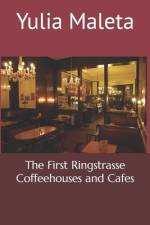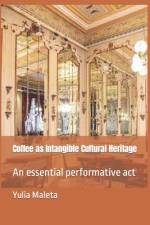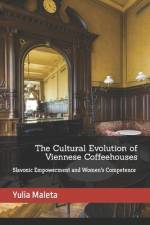av Yulia Maleta
829,-
In this book, the seventh of my series on "Introducing Vienna's Café Culture", I elaborate on historic Viennese coffeehouses - ones built just preceding the transformative Ringstrasse epoch (1857-1914). Remarkably, most of these coffeehouses are still in operation today- shining in modern, contemporary times. In Book 6, I addressed Café Demel (1786) and Café Dommayer (1823) [1783] as two landmark Viennese coffeehouses. Here, I emphasise Café Frauenhuber (1824), and Café Vienne (1829), both established before the Ring's development. Thereafter, I focus on core 1840s period coffeehouses: Café Eiles (1840) and Café Griensteidl (1847), with Eiles still serving coffee and cake today.In relation to these above coffeehouses, I highlight principal thematic insights, framing my Book Series: Café Frauenhuber (1824 [1746]), The city's oldest traditional coffeehouse; Café Vienne (1829), Balkan connections, Café-Restaurant namesake, and European Historic Cafés Association; Café Eiles (1840) Political Pissazz, Viennese coffee roastery, and Intangible Cultural Heritage; and, conclude with: Café Griensteidl (1847), Legacy of Coffeehouse/ Literati amidst Café Society. My next book (8) illustrates key Ringstrasse cafes, in chronological order of establishment: Café Schwarzenberg (1861), Café Ritter (1867), and Café Imperial (1873). As part of my Series, I evoke the Slavic of legacy framing Vienna's cafes. I credit Slavonic peoples' pivotal leadership and loyal patronage, as integral to Vienna's coffeehouse development (Café Sperl 2017a; Kaffee Alt Wien 2022a; Aida 2022b; Café Hawelka 2022a; Café Sluka 2022a; Hotel Sacher Vienna 2022a). My Book contends that Colonel Kolschitzky, a Polish Diplomat/Nobleman, and leading hero of the Siege of Vienna (1683) [supported by Polish King Sobieski the Third], was one of the first in the city to acquire a Viennese coffeehouse licence (1683). Kolschitzky's innovative move frames my Slavonic- enlightened joy de vivre, omnipresent through the leadership and patronage of Slavic peoples within historic-modern Viennese café society. Further, my Series details cafes' extensive menu cards, and certainly, tantalising coffees, tasty cakes, refined pastries, along with appetising savoury cuisines, influenced by interrelated Slavonic and continental palates. Drawing upon the Slavonic contribution towards Vienna's coffee culture, and Unesco's (2011) official recognition of the Viennese coffeehouse as 'intangible cultural heritage', my Book Series focusses on these coffeehouses: Café Demel (1786); Café Dommayer (1823) [1783]; Café Frauenhuber (1824[1746]); Café Vienne (1829); Café Eiles (1840); Café Griensteidl (1847); Café Schwarzenberg (1861); Café Ritter (1867); Café Imperial (1873); Café Landtmann (1873); Café Diglas [Wollzeile] (1875) along with the four Diglas cafés: Café Diglas (Schottenstift), Dairy Diglas (Café Meierei Diglas) and Diglas at the meat market (Café Diglas, Fleischmarkt); Café Central (1876); Hotel Sacher and Café Sacher (1876); Café Sperl (1880); Conditorei Sluka (1891); Café Westend (1895); Café Savoy (1896); Café Mozart (1899) [1794]; Café Museum (1899); Café Weimar (1900); Café Korb (1904); Café Prückel (1904); Café Goldegg (1910); Café Jelinek (1910); Aida (1913) [1921]; Kaffee Alt Wien (1922); Café Hawelka (1939); Kleines Café (1973-74); and Café Hofburg (2004) [building dates to 1279, the 13th century], situated in the former Hofburg palace. My 'Viennese' Series is developed with Books focussing on principal protagonist, Sophia, an ambitious writer, who seeks inspiration through regular visits to Café Sperl. Likewise, Sperl is my favourite coffeehouse. Sophia's narration frames my subjective insight towards coffee society. Simultaneously, I illuminate the authenticity of each café, presenting an integrated non-fictional to fictional account of Viennese coffeehouse life - spanning historic to m





